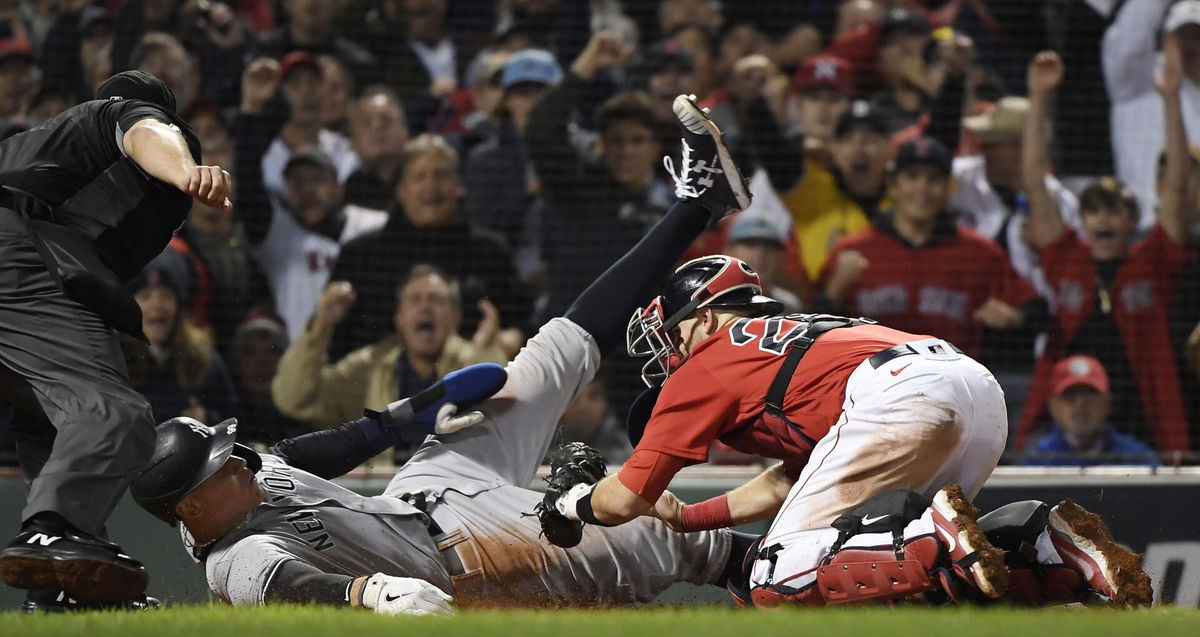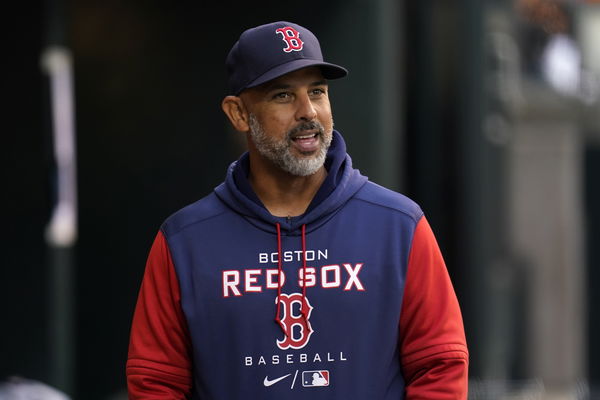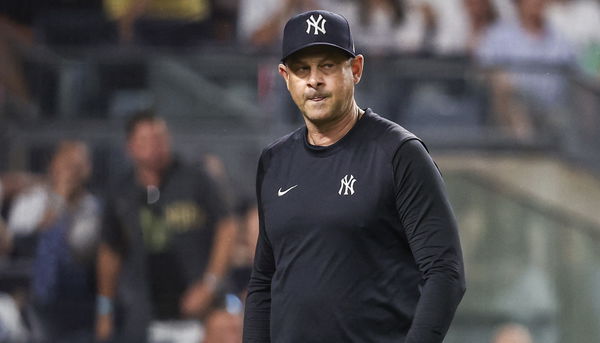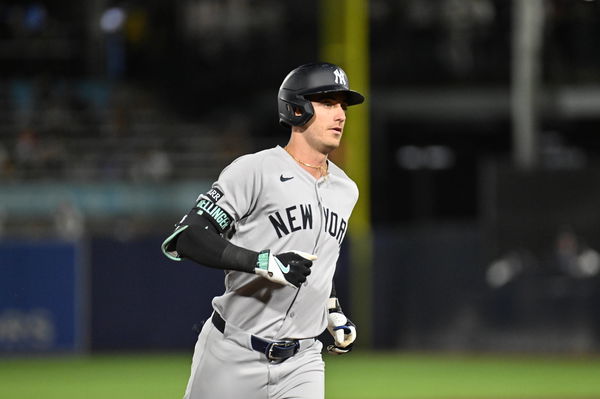
USA Today via Reuters
Oct 5, 2021; Boston, Massachusetts, USA; New York Yankees right fielder Aaron Judge (99) is out at home against Boston Red Sox catcher Kevin Plawecki (25) during the sixth inning of the American League Wildcard game at Fenway Park. Mandatory Credit: Bob DeChiara-USA TODAY Sports

USA Today via Reuters
Oct 5, 2021; Boston, Massachusetts, USA; New York Yankees right fielder Aaron Judge (99) is out at home against Boston Red Sox catcher Kevin Plawecki (25) during the sixth inning of the American League Wildcard game at Fenway Park. Mandatory Credit: Bob DeChiara-USA TODAY Sports
Once the crown jewel of American sports, this rivalry now resembles a soap opera with cleats. Yankees and Red Sox fans once lived for every pitch, every swing, every sassy dugout glare. MLB schedules, player movement, and social media gossip have conspired to turn historic animosity into casual annoyance. What was once epic tension now feels like background noise, though the jerseys, chants, and legacy still demand attention.
Watch What’s Trending Now!
For a century, the Yankees and Red Sox defined baseball drama, consequence, and neighborhood-level grudges across America. The feud sharpened after Babe Ruth’s 1919 sale, birthing mythology and a decades-long obsession with scoreboards and bragging rights. By the late 1990s and early 2000s, every series felt seismic, appointment viewing with national implications and emotional weight. Playoff collisions in 1999, 2003, and 2004 amplified every pitch, bruise, and scoreboard-taunting smirk into immortal folklore. The bleachers roared while October often arrived carrying pinstripes, beards, and grudges that shaped the sport’s identity.
Yet the temperature eased, gradually at first, then dramatically, until the theater resembled polite historical reenactments more than warfare. MLB’s balanced schedule trimmed divisional collisions, making each showdown rarer and paradoxically less urgent to the wider baseball audience. Player movement and social-media friendships dulled the rivalry’s sharp edges, transforming enemies into offseason workout partners exchanging emojis. Even Yankees pitcher Nestor Cortes admitted the spice shifted toward Tampa Bay and Toronto, not Boston lately. Without frequent October collisions, spite calcified into nostalgia, and nostalgia rarely fuels ninety-five fastballs or violent brushbacks anymore.
ADVERTISEMENT

Imago
Boston Red Sox manager Alex Cora watches against the Detroit Tigers in the sixth inning of a baseball game in Detroit, Monday, April 11, 2022. (AP Photo/Paul Sancya)
The Boston Red Sox then accelerated the rivalry’s fade with self-inflicted wounds, headlined by trading Rafael Devers to San Francisco. The mid-June blockbuster sent their best hitter west for Jordan Hicks, Kyle Harrison, James Tibbs, and Jose Bello. Boston Herald insider Gabrielle Starr called it a mess, questioning planning and trust after months of positional friction. Alex Bregman’s arrival pushed Devers toward DH, then first base, fraying relationships and confusing leadership expectations dramatically. The message to stars and free agents felt chilling: even homegrown pillars were movable parts with no stability.
On the field, managerial caution also backfired when Alex Cora short-circuited Garrett Crochet’s dominant outing against the Mets. Pulled after eighty-five pitches during a tied game, Crochet watched Boston’s overworked bullpen unravel in predictable fashion. Cora cited workload management and October dreams, but his ace understandably fumed afterward about the restrictive leash length. Short starts, ejections, and bullpen marathons magnified the decision, telegraphing process over pulse in otherwise winnable moments.
ADVERTISEMENT
Across the diamond, the New York Yankees’ chaos feels equally undiagnosable: fundamentals fray, baserunning short-circuits, and cutoff throws repeatedly misfire. Advanced metrics suggest dominance, with WAR leaders and run differential sturdy, yet results unravel into midsummer collapses. Familiar swoons echo seasons like 2022 and 2024, where projected dominance evaporated under pressure and untimely breakdowns. The spectacle becomes cognitive dissonance: dazzling stretches followed by inexplicable spirals, shredding confidence and emboldening embattled division rivals. Aaron Boone’s clubhouse calms and steadies tempers, but critics argue accountability and fundamentals vanish whenever storms predictably gather again.
Bullpen roulette sharpened critiques further, especially after deploying Yerry De Los Santos during a crucial sixth-inning collapse. Michael Kay blasted the strategy on air, warning that the season slipped away while stronger arms sat unused. A rain delay preceded Joe Ryan’s gem, helping Minnesota finally topple New York 4–1 at Yankee Stadium. Meanwhile, expensive acquisitions like Devin Williams have stumbled, complicating bullpen roles and exposing glaring mismatches in high-leverage situations. Even after additional reinforcements, inconsistency persisted, feeding narratives of reactive planning and paralyzed, matchup-first decision-making.
ADVERTISEMENT

USA Today via Reuters
Jun 22, 2024; Bronx, New York, USA; New York Yankees manager Aaron Boone (17) walks off the field after being ejected in the seventh inning against the Atlanta Braves at Yankee Stadium. Mandatory Credit: Wendell Cruz-USA TODAY Sports
Both organizations have also embraced an odd detente, with Boone and Cora’s rapport diffusing fireworks before ignition. Players train together year-round, collaborate online, and exchange tips, transforming former villains into professional acquaintances with shared trainers. Fewer divisional games reduce repetition, cool grudges, stabilize atmospheres, and rarely allow tempers to reach boiling points anymore. Injuries shuffle stars offstage while roster churn prioritizes depth charts over narrative continuity that once defined every matchup. The rivalry still echoes loudly in the stands, yet on-field hostility dissolves into businesslike transactions and professional courtesy.
Collectively, these choices and missteps have demoted baseball’s loudest opera into background music for internal audits instead. The fix requires competence more than animus: smarter rosters, healthier stars, clearer roles, and braver, contextual managing. Only then can the Yankees and Red Sox rekindle tension earned through meaningful October collisions and championship consequences. Until accountability arrives, the rivalry remains an echo—memorable, marketable, but maddeningly self-sabotaged by both organizations.
ADVERTISEMENT
The Yankees Can Solve Their Problems, and the Solution Is Right in Front of Them
Baseball has always been a game of adjustments, but the Yankees seem committed to repeating mistakes with theatrical flair. MLB thrives on rivalries, yet even the Red Sox look more like a cautionary tale than a true foil. Instead of sharpening their edge, the Yankees and Aaron Boone insists on blunting it with bullpen roulette, managerial hedges, and fundamental lapses. The irony? The blueprint for fixing this circus is embarrassingly obvious if they’d only look.
The New York Yankees’ 2025 roster headaches extend beyond Aaron Judge’s temporary absence and Stanton’s lineup placement. Austin Wells’ decline behind the plate has been glaring, dragging down both offensive spark and defensive reliability. Paul Goldschmidt’s sore knee complicates first base stability, leaving management balancing durability with future roster construction. Looming free agency for Cody Bellinger and Trent Grisham only sharpens the uncertainty swirling around New York.
ADVERTISEMENT
A bold solution exists if the Yankees embrace creativity instead of predictable, conventional choices. Cody Bellinger should return as the everyday first baseman, preventing the Mets from stealing him away. Ben Rice can shift back to catcher, his natural position, supplanting Wells’ starting role. Meanwhile, Trent Grisham remains in center while Spencer Jones and Jasson Domínguez battle for left field.

Imago
MLB, Baseball Herren, USA New York Yankees at Tampa Bay Rays Aug 19, 2025 St. Petersburg, Florida, USA New York Yankees left fielder Cody Bellinger 35 rounds the bases after hitting a solo home run in the first inning against the Tampa Bay Rays at George M. Steinbrenner Field. St. Petersburg George M. Steinbrenner Field Florida USA, EDITORIAL USE ONLY PUBLICATIONxINxGERxSUIxAUTxONLY Copyright: xJonathanxDyerx 20250819_ams_db1_125
This arrangement preserves offensive thunder while maximizing defensive efficiency at critical positions across the diamond. It also avoids wasting Rice’s talent, retains Grisham’s glove, and secures Bellinger’s versatile presence long-term. By reshaping roles instead of losing talent, the New York Yankees creates depth unmatched across the league. Such ingenuity could transform Yankee inconsistency into dominance, reestablishing them as October’s most dangerous American League powerhouse.
Judge and Stanton may dominate the billboards, but solutions don’t always swing from the marquee. The Yankees keep acting like roster gaps require divine intervention when really, it just requires Bellinger, Rice, and common sense. Grisham, Jones, and Domínguez aren’t complications—they’re assets begging to be aligned with purpose. If New York refuses to see it, maybe the Red Sox will gladly remind them what wasted potential looks like.
ADVERTISEMENT
ADVERTISEMENT
ADVERTISEMENT

